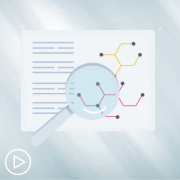Factors That Guide a CLL Treatment Decision
Factors That Guide a CLL Treatment Decision from Patient Empowerment Network on Vimeo.
When making a chronic lymphocytic leukemia (CLL) treatment decision, several factors come into play. Dr. Anthony Mato explains how he partners with patients to find the best fit for their specific CLL.
Dr. Anthony Mato is Director of the CLL Program at Memorial Sloan Kettering Cancer Center. Learn more here.
See More From The Pro-Active CLL Patient Toolkit
Related Resources

|

|

|
Transcript:
Katherine:
So, with all of these options, how do you then decide which class might be right for an individual patient?
Dr. Mato:
Well, you think about the patient. You think about their medical history, their comorbidities, their preferences, and then you try to focus on their disease biology, their genetic factors, their molecular factors, and also what therapies they’ve had. So, if I had a patient who had ibrutinib (Imbruvica) previously, I’m not going to give them acalabrutinib if they were resistant, for example. So, it’s not just one thing. It’s multiple things that have to be taken into account in order to make a decision.
And, of course, for me as an oncologist, the hardest part is that there have not been many trials comparing the newest therapies to one another. So, I can’t tell you what’s better ibrutinib or acalabrutinib (Calquence) by a head-to-head comparison. I can’t tell you whether you should start with ibrutinib before venetoclax (Venclexta) or venetoclax before ibrutinib not because we’re not very interested in having those studies performed. But they have not been performed at this point in time.
The only thing I can tell you based on prospective data from a head-to-head comparison is that we do have direct data comparing acalabrutinib which is a BTK inhibitor to idelalisib (Zydelig) in the relapsed/refractory setting. And by all measures, acalabrutinib was better tolerated and more effective. So, we have some very early head-to-head data but not as much as we need in order to make these decisions for patients.
Katherine:
How are side effects taken into consideration?
Dr. Mato:
Well, all of these drugs although they are targeted, and they’re oral, and they’re relatively easy compared to chemotherapy are not without side effects. And so, each of these classes have their own unique side effects. BTK inhibitors can be associated with increased bleeding risk or atrial fibrillation or infection. PI3K inhibitors can be associated with lung or liver or colon damage. BCL-2 inhibitors might be associated with lowering of the blood counts and infection risk or something called tumor lysis syndrome.
So, we try to, if you had a side effect to one, not pick a drug with the exact same side effect profile, for example. And we also think about medical history for patients. So, if I had a patient who was on blood thinners and has poorly controlled atrial arrhythmia like AFib, I might not start them on a BTK inhibitor. If I patient who has active Crohn’s disease or ulcerative colitis that’s poorly controlled, I might not start them on a PI3K inhibitor. And if I have a patient who’s near dialysis because of chronic kidney disease, and I’m worried about further tumor lysis syndrome, I might not start them on a BCL-2 inhibitor.
So, you kind of weigh a patient’s medical history, their prior therapies, and their response and toxicities, and then make a decision on what’s the best fit for patients.
Katherine:
Well, what kind of testing is involved to make sure you have the best approach?
Dr. Mato:
Well, there are several tests that we think about using or we do use, and they’re mostly genetic and prognostic tests. And so, what we like to do is look at the CLL cells beyond looking at them under a microscope to try to identify the genetic markers that drive the biology of CLL. So, for example, if I have a patient who has deletion 17p which is one of the more feared chromosome abnormalities, I know right off the bat chemotherapy’s not a good fit for that patient. But I can do quite well with a BTK inhibitor like ibrutinib.










